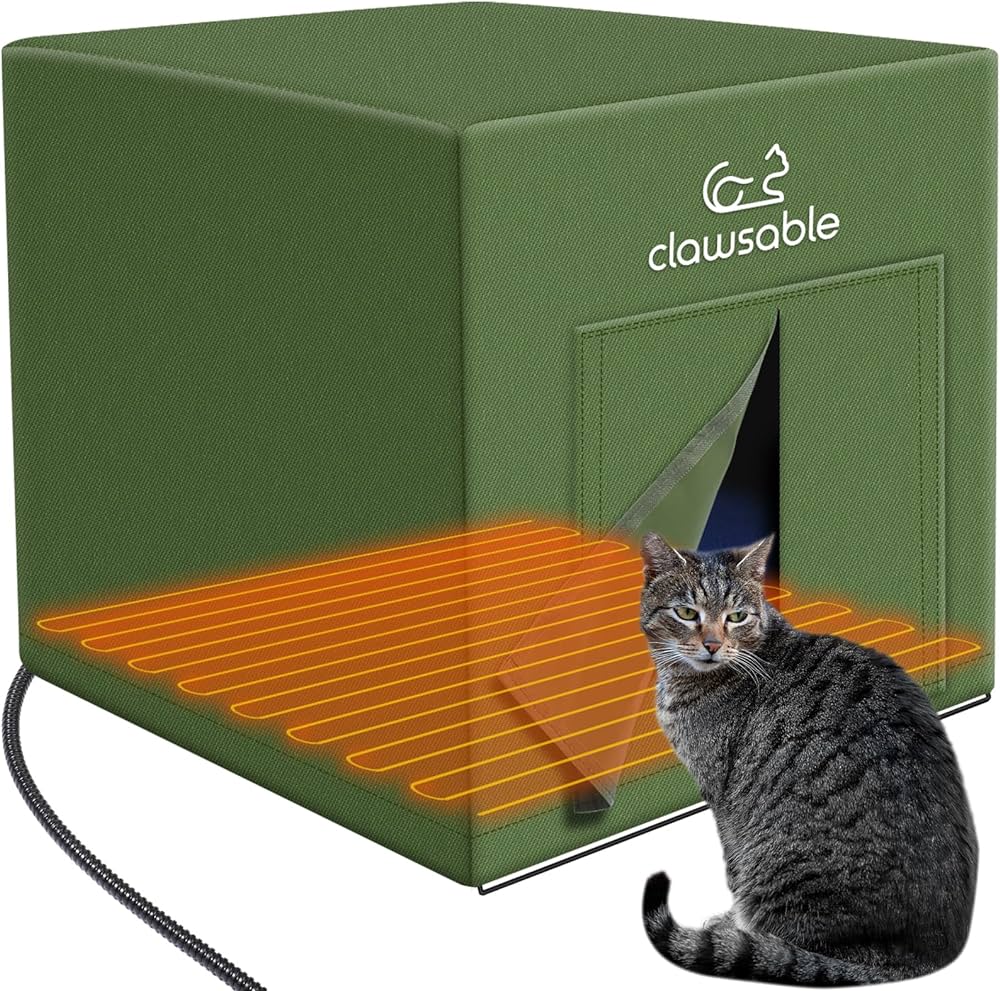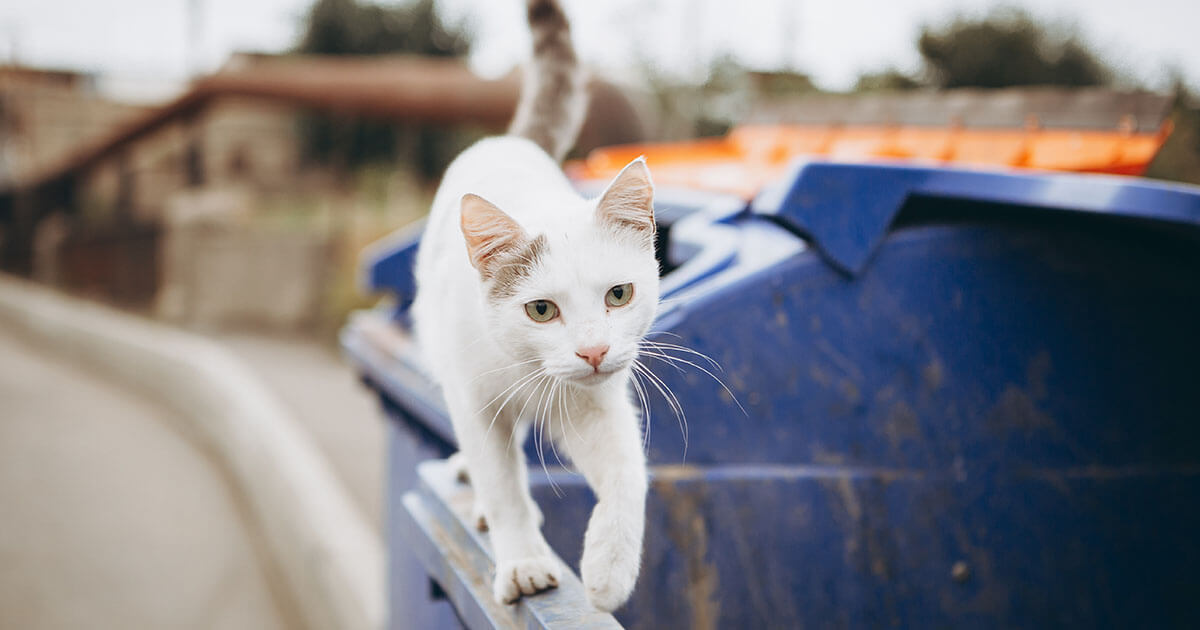To keep a stray cat warm in winter, provide a shelter insulated with straw and elevate it off the ground. Ensure the entrance is small to trap body heat.
As temperatures drop, caring for outdoor felines becomes a pressing concern. Stray cats seek warmth, and a DIY shelter can offer refuge from the harsh winter conditions. Use sturdy materials like wood or thick plastic for the construction, and line the interior with straw, which doesn’t retain moisture like blankets or hay.
Position the shelter in a secure place, shielded from wind and snow, and offer food and water in spill-proof containers nearby. Remember that these small acts of kindness can make a big difference in a stray cat’s life, providing safety and warmth during the coldest months. Your efforts can help ensure these animals stay cozy and protected throughout the winter season.
Cats And Cold Weather: The Feline Challenge
Stray cats face real threats in cold weather. They struggle to find shelter and warmth. This part of the blog will focus on explaining these challenges and how to help these furry friends.
Cats and Cold Weather: The Feline ChallengeWhy Stray Cats Suffer In The Cold
Stray cats lack the cozy indoors during chilly months. They often endure freezing temperatures with limited access to shelter or food, which make survival quite hard.
- Frostbite can damage their ears, paws, and tail.
- They may use up more energy to stay warm, leading to weight loss.
- Limited food sources mean they can become malnourished.
- Possible dehydration since water sources may freeze.
Understanding The Risks To Feline Health
| Health Risk | Consequence | Prevention |
|---|---|---|
| Hypothermia | Body temperature drops dangerously low | Provide insulated shelters |
| Upper Respiratory Infections | Sneezing, coughing, runny eyes and nose | Warm, dry bedding areas |
| Frostbite | Tissue damage, can lead to amputations | Shelter from cold and wind |
| Arthritis flares | Stiffer, more painful joints in cold weather | Soft bedding and warmth |
By understanding these risks, we can make better decisions to help stray cats stay warm and healthy during the winter.

Credit: www.facebook.com
Building Warmth: Diy Shelters For Stray Cats
As winter’s chill settles in, spare a thought for the stray cats in your neighborhood. These feline friends lack the cozy corners we take for granted. Fortunately, with a few simple materials, anyone can build a warm shelter. These DIY projects offer safe havens for stray cats during the cold months.
Materials You’ll Need
The right materials are crucial when crafting a stray cat shelter. Ensure your chosen supplies are sturdy and insulating.
- Plastic storage bin: The base of your shelter.
- Styrofoam sheets: For insulation.
- Straw or newspaper shreds: As bedding.
- Heavy-duty tape: To secure components.
- Box cutter or utility knife: For cutting openings.
Step-by-step Construction Guide
- Cut a cat-sized entry hole in the storage bin.
- Line the bin’s interior walls with Styrofoam.
- Secure Styrofoam with tape.
- Fill the floor with straw or shredded newspaper.
- Cut an insulation flap for the entrance.
- Place the lid on the bin and tape all edges for security.
Placement And Maintenance Tips
Once your shelter is ready, placing it correctly maximizes its effectiveness. Proper care ensures long-term durability.
| Placement | Maintenance |
|---|---|
| Elevate the shelter slightly off the ground. | Regularly check for damage or moisture. |
| Position it in a quiet, sheltered area. | Replace the bedding as needed. |
| Ensure it’s away from foot traffic. | Keep the entrance clear of snow and debris. |
| Anchor it to prevent tipping in strong winds. | Inspect the shelter to fix any wear or tear. |
Winter-proofing Existing Structures
As winter approaches, it’s important to focus on winter-proofing existing structures to keep stray cats warm. These furry friends need our help to stay cozy during the chill. Check out easy steps to make shelters warm and safe!
Insulating Cat Houses
Insulating cat houses is key to keeping warmth in and cold out. Consider these tips:
- Use straw, not hay: Straw repels moisture while hay doesn’t.
- Reflective insulators: Place these inside roofs and walls to reflect the cat’s body heat.
- Weatherproof the exterior: Seal cracks and cover the outside with waterproof materials.
Safe Heating Solutions
Safe heating keeps cats toasty without risks. Try these:
- Microwavable heating pads: They stay warm for hours and are safe.
- Self-warming beds: These use a cat’s body temperature to generate heat.
- Thermal blankets: Wrap them around cat houses for extra warmth.
Keeping Food And Water From Freezing
Cats need liquid water and unfrozen food. Here’s how to manage:
- Use insulated bowls: They prevent water and wet food from freezing.
- Heated water dishes: These are electric and keep water from icing up.
- Place food and water in shelters: This protects them from the elements.

Credit: m.facebook.com
Feeding The Free-roaming Felines
As winter’s chill sets in, it’s not just humans who feel the cold. Stray cats roam our streets, often overlooked yet struggling to survive the low temperatures. Today’s topic shines a spotlight on Feeding the Free-Roaming Felines – a crucial act of kindness that can mean the world to these furry wanderers. Understanding their dietary needs, adopting best feeding practices, and steering clear of hazards are all vital in keeping them warm and nourished through the frosty months.
Nutritional Needs In Cold Weather
When temperatures drop, stray cats need more energy to stay warm. Their bodies burn through food quickly, making rich, high-calorie meals essential. A diet high in protein and fat helps them produce more body heat. This means stocking up on wet food, which is not only nutritious but also provides hydration, as well as dry food that’s dense in calories.
Best Feeding Practices
- Stick to a regular feeding schedule so cats know when to expect food.
- Use insulated bowls to prevent food from freezing.
- Position food in sheltered spots away from the wind.
- Leave slightly warmed food to give an extra touch of warmth.
- Keep the feeding area clean to attract cats and discourage pests.
Avoiding Common Hazards
Winter brings specific risks for stray cats. Antifreeze, often used in cold weather, is deadly if ingested. Ensure that there are no spills nearby feeding sites. Additionally, provide food away from roads to decrease the risk of accidents. Lastly, check if the cats have a safe space to eat without the threat of predators or other dangers.
Community Efforts For Stray Cat Safety
As winter winds howl, spare a thought for our furry feline friends on the streets. Community Efforts for Stray Cat Safety become crucial. Kind hearts and concerted actions can ensure that stray cats find warmth during the chilly months. Here’s how communities can band together for these vulnerable animals:
Organizing Local Shelter Drives
Creating a safe haven starts with having the right resources. Organizing shelter drives is a powerful way to help. These events collect crucial supplies such as:
- Insulated cat homes
- Warm blankets
- Food and water bowls
A successful drive can stem from:
- Posting flyers that list needed items
- Setting up collection points around town
- Inviting locals to help build DIY cat shelters
Educating The Public
Educating our neighbors fosters a nurturing environment for stray cats. Simple actions include:
| Action | Impact |
|---|---|
| Spreading awareness through social media | Reaches a wide audience quickly |
| Organizing community meetings | Gathers like-minded individuals |
| Distributing informative pamphlets | Provides practical tips for cat care |
Remember, knowledge is warmth in the fight against the cold.
Collaborating With Animal Welfare Organizations
Partnering with established groups can amplify efforts:
Form alliances with local shelters and rescue groups. These groups can provide:
- Expertise in cat care
- Access to veterinary services
- Additional resources for outreach
Together, groundwork laid can turn into a web of support. Community and charity join hands for the sake of every stray whisker braving the winter.

Credit: www.amazon.com
Monitoring Feline Friends Through Winter
Monitoring Feline Friends through Winter becomes vital as temperatures drop. Stray cats face harsh conditions and need extra care. These steps help ensure their health and safety through the colder months.
Health Check-ups
Regular health check-ups are crucial for stray cats during winter. Cold weather can worsen existing conditions. It is the best time for a veterinary visit. Vets assess the cat’s health and provide necessary medication. Signs of frostbite or hypothermia demand immediate attention. Symptoms include lethargy, shivering, and pale skin.
Ensuring Ongoing Care
Stray cats need consistent access to shelter, food, and water. Insulated shelters retain heat and protect from wind and snow. Heated water bowls prevent freezing. High-calorie food maintains body heat. Regular feedings are vital. Checking on these provisions daily shows commitment to their well-being.
Adoption: A Warm Home For Every Cat
Adoption is the ultimate warm gesture. Encourage others to open their homes to a stray cat. Local shelters often run winter adoption drives. Help spread the word through social media or community boards. Foster programs are also an option. These provide temporary homes until a permanent one becomes available. Every adoption means one less cat braving the cold outdoors.
Frequently Asked Questions Of Keep Stray Cat Warm In Winter
How Cold Is Too Cold For Stray Cats?
Temperatures below 32°F (0°C) can be dangerous for stray cats, potentially leading to hypothermia if shelter is not available.
How Do You Keep A Stray Cat Warm Outside In The Winter?
Provide a shelter lined with straw, not blankets. Elevate the shelter off the ground. Use a heated cat bed or pads. Ensure fresh, unfrozen water is available. Keep the shelter away from wind.
What Is The Best Shelter For Outdoor Cats In Winter?
The best shelter for outdoor cats in winter is an insulated, waterproof structure with a heated pad, providing warmth and protection from the elements.
How Do You Make A Feral Cat Winter Shelter?
Choose a sturdy container as the base for your feral cat shelter. Insulate it with straw, avoiding blankets or towels that retain moisture. Cut a small entrance and cover the shelter with a waterproof material. Elevate the shelter off the ground to prevent moisture from entering.
Conclusion
As the cold months approach, ensuring the comfort of stray cats is a compassionate act. Simple steps like providing shelter, warm bedding, and regular food can make a significant difference. Let’s unite in safeguarding these furry friends against winter’s chill, highlighting our humanity with every warm paw we protect.

